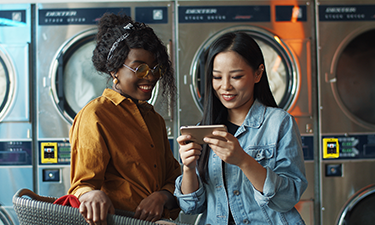We are quickly moving toward a cashless society, with the fast development of new payment methods. This change is coming along both because of advances in technology and because of consumer demand for a more convenient and personalized shopping experience. Trends point to a greater shift toward cashless payments, especially mobile wallets. Accepting cashless payments enables your business to grow its revenue by ensuring that consumers can make a purchase with their preferred payment method.
The Shift to Cashless Payments
Consumer behavior has shifted exponentially due to the outbreak of the coronavirus, increasing the desire for more convenient and contactless payments. Offering cashless payment solutions ensures more security, both for the business owner and for the customer. EMV “chip card” transactions, for example, are end-to-end encrypted which provide the customer with the peace of mind, knowing that their cards can’t be copied and that they are protected from fraud. For business owners, not carrying cash also reduces the risk of theft. So, let’s try to understand what cashless payments are and how they can help your business thrive.
Types of Cashless Payments
There are several types of cashless payments such as: swipe cards, EMV-enabled chip cards, QR codes, mobile wallets, and more. Let’s take a look at each one of these methods.
-
Swipe Cards
Swipe cards are classic debit and credit cards that the customer swipes on a card reader. The card reader reads the information on the card’s magnetic stripe and processes the transaction. Though this payment method is convenient, it is not the most secure because the information on the card is not encrypted.
-
EMV-enabled Chip Cards
EMV stands for Europay, Mastercard, and Visa, the three companies that developed this technology. These cards are called chip cards because they have an embedded microchip that encrypts the card’s data. You can pay with a chip card either by tapping it on the card reader or by inserting it into the card reader.
-
QR Codes
When a customer scans a QR code, a payment form will appear enabling them to pay on the spot. QR Codes are also often tied to certain apps, like Monyx Wallet. In this case, you can either connect your credit card to the app or add a top-up to the card. When you scan a QR code, the transaction will go through automatically using the app as a payment method.
-
Mobile Wallets
Other examples of mobile wallets are Apple Pay and Google Pay which store credit card information on your phone. Transactions take place via near-field communication (NFC) technology: you just tap your phone on the point of sale, and the transaction goes through.
Cashless Payment Acceptance Leads to Increased Revenue and Reduced Operational Expenses (OPEX)
When you accept cashless payment methods, you never miss out on a sale which helps you increase your revenue. Consumers are carrying cash around less and less, and even credit cards will soon be a thing of the past with the rise of mobile wallets. Leaving your home with just your phone, knowing that you can both use it to communicate, find your way, and pay, provides the most convenient experience for consumers.
In order to be most effective, cashless payments need to work together with management and customer loyalty solutions. You need to accept the payment via a card reader or integrated POS which works together with embedded, localized payment solutions. But what happens afterwards?
A management system that is connected to your POS can help you analyze sales and make data-driven decisions. Gathering and analyzing data on sales helps you boost customer loyalty, increasing the likelihood that consumers will return, boosting your revenue.
Cashless payments also help reduce operational expenses because they eliminate cash counting and trips to the bank. This helps you save both time and money. These strategies to increase your revenue and lower your operational expenses work together to reduce your total cost of ownership (TCO).
Cashless Payments & Consumer Loyalty: The Growth of Mobile Wallets
As we mentioned before, mobile wallets are becoming more prevalent with different mobile wallets being developed around the world. Mobile wallets are more than just a payment method, they also have digital engagement solutions. They’re a valuable tool for customer loyalty because they provide business owners with an opportunity to create marketing campaigns, provide punch cards, refunds, top up bonuses on prepaid cards, make discounts available for users, and more. These incentives build a loyal customer base that will return to your business again and again, increasing your sales.
In conclusion, providing customer-centered payment solutions are an easy and effective way to reduce your total cost of ownership, helping your business grow as you increase your bottom line. Get started now.


